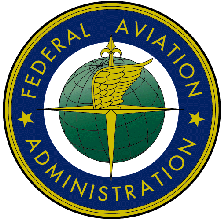Fri, Jan 10, 2003
 The U.S. Department of Transportation's Federal
Aviation Administration (FAA) just announced that El Salvador
complies with international safety standards set by the
International Civil Aviation Organization (ICAO) and has given the
country a Category 1 rating following a reassessment of its civil
aviation authority. El Salvador was previously rated Category
2.
The U.S. Department of Transportation's Federal
Aviation Administration (FAA) just announced that El Salvador
complies with international safety standards set by the
International Civil Aviation Organization (ICAO) and has given the
country a Category 1 rating following a reassessment of its civil
aviation authority. El Salvador was previously rated Category
2.
Inspectors from the FAA Flight Standards International Field
Office, located in Miami, FL, worked closely with the Central
American Aviation Safety Agency in providing technical resources to
help El Salvador take the actions necessary to meet its ICAO
obligations.
This announcement is part of the FAA's International Aviation
Safety Assessment (IASA) program, under which the agency assesses
the civil aviation authorities of all countries with air carriers
that operate to the United States and makes that information
available to the public.
 The
assessments are not an indication of whether individual foreign
carriers are safe or unsafe. Rather, they determine whether or not
foreign civil aviation authorities (CAA) are meeting ICAO safety
standards, not FAA regulations.
The
assessments are not an indication of whether individual foreign
carriers are safe or unsafe. Rather, they determine whether or not
foreign civil aviation authorities (CAA) are meeting ICAO safety
standards, not FAA regulations.
Countries with air carriers that fly to the United States must
adhere to the safety standards of ICAO, the United Nations'
technical agency for aviation that establishes international
standards and recommended practices for aircraft operations and
maintenance.
The FAA, with the cooperation of the host civil aviation
authority, assesses countries with airlines that have operating
rights to or from the United States or have requested such
rights.
Specifically, the FAA determines whether a foreign civil
aviation authority has an adequate infrastructure for international
aviation safety oversight as defined by ICAO standards. The basic
elements that the FAA considers necessary include:
- laws enabling the appropriate government office to adopt
regulations necessary to meet the minimum requirements of
ICAO;
- current regulations that meet those requirements
- procedures to carry out the regulatory requirements
- air carrier certification, routine inspection, and surveillance
programs, and
- organizational and personnel resources to implement and enforce
the above.
The FAA has established two ratings for the status of these
civil aviation authorities at the time of the assessment: (1) does
comply with ICAO standards, (2) does not comply with ICAO
standards.
More News
He Attempted To Restart The Engine Three Times. On The Third Restart Attempt, He Noticed That Flames Were Coming Out From The Right Wing Near The Fuel Cap Analysis: The pilot repor>[...]
Make Sure You NEVER Miss A New Story From Aero-News Network Do you ever feel like you never see posts from a certain person or page on Facebook or Instagram? Here’s how you c>[...]
From 2009 (YouTube Edition): Leading Air Show Performers Give Their Best Advice for Newcomers On December 6th through December 9th, the Paris Las Vegas Hotel hosted over 1,500 air >[...]
Aero Linx: NASA ASRS ASRS captures confidential reports, analyzes the resulting aviation safety data, and disseminates vital information to the aviation community. The ASRS is an i>[...]
“For our inaugural Pylon Racing Seminar in Roswell, we were thrilled to certify 60 pilots across our six closed-course pylon race classes. Not only did this year’s PRS >[...]
 NTSB Final Report: Rutan Long-EZ
NTSB Final Report: Rutan Long-EZ ANN FAQ: Turn On Post Notifications
ANN FAQ: Turn On Post Notifications Classic Aero-TV: ICAS Perspectives - Advice for New Air Show Performers
Classic Aero-TV: ICAS Perspectives - Advice for New Air Show Performers ANN's Daily Aero-Linx (06.28.25)
ANN's Daily Aero-Linx (06.28.25) Aero-News: Quote of the Day (06.28.25)
Aero-News: Quote of the Day (06.28.25)




